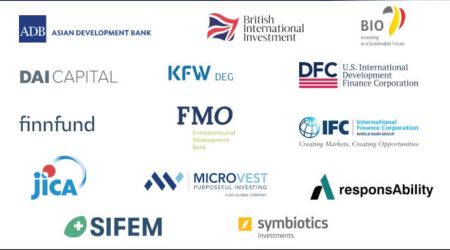By Anil Neupane
Global business environment is changing rapidly with decentralization, smaller profit margin, need to react quickly to the changing market demands and increasing importance of service. In order to survive or improve in this aggressive environment, organizations tend to implement different approaches of Outsourcing, Business Intelligence (BI), Supply Chain Management (SCM) and Customer Relationship Management (CRM) systems. But despite these efforts, every organization does not succeed to meet the strategic goals.
Approaches used
Traditionally outsourcing has been considered as the best approach for cost-saving. But this approach does not always support companies to meet their strategic outcomes. A survey conducted by Deloitte Consulting, among 25 of the world's largest organizations across eight sectors with extensive outsourcing experiences and multivendor relationships, revealed that 70% of participants identified cost savings as the major driver of the outsourcing decision. However, opposing to the optimistic interpretation of outsourcing by vendors and the marketplace, they later realized that outsourcing is a complex process and the anticipated benefits often fail to materialize. Instead of simplifying operation, there may be complexities due to outsourcing. Also the costs may increase and the value chain may experience some friction requiring more senior management attention and deeper management skills than anticipated. However, outsourcing allows organizations to transfer financial and operational risk to vendors. But organizations are discovering that their contracts will never fully protect them against customer damage and business losses caused by service disruption.
Company should focus on outsourcing in its operational areas and handle their core areas on their own. By doing this outsourcing facilitates a company focus on its core business by having operations carried out by an external expert. Freed from devoting energy to areas that are not in its expertise, the company can focus its resources to meet its core customer needs.
One of the major factors for a successful outsourcing is to have a clear strategic plan and vision. Moving along this path of clear plan and vision, a company can meet the strategic goals. As the survey report of Deloitte Consulting suggested, in order for meeting the strategic outcomes with minimal risks, companies should outsource only commodity functions to guard against a loss of knowledge instead of looking for differentiated growth solutions. As the report suggests, companies should avoid outsourcing solely on cost savings and should plan for short-term outsourcing to prevent vendor dependency. In the long run, organizations that continue to outsource will experience a loss of bargaining power to vendors as the supply side consolidates.
Those that apply strong skills in deal structuring, risk management and strong management skills to oversee deals from inception to execution will be best positioned to reap the benefits of outsourcing. Outsourcing will still remain a useful solution within the conservative context of five models: Centralize-Standardize-Outsource Transform-Operate-Transfer, Commodities Outsourcing, Risk Transfer (Insurance), and Shifting Fixed Costs to Variable Costs. In case of current market situation, it has been found that outsourcing frequently fails to deliver its promise. In this case, it is suggested that the world’s largest companies should be able to replicate the vendor’s structural advantages in-house and rely on vendors only under specific circumstances. To meet the strategic outcomes from outsourcing, companies should move from an ad hoc outsourcing approach to a strategic multisourcing.
Business Intelligence
Timely access to relevant information for right decision making has been critical for business success. However it has been very challenging for organizations to retrieve the right information from the huge amount of data collected as a result of diverse new data collecting technologies. Many companies have a gap between their strategy and operations as a failure to retrieve right information from their data. Unless they retrieve right information to realize this gap, it is not possible for them to come up with expected strategic outcomes. By providing right information at right time, business intelligence can help organizations to find out the gap between their strategy and operations following which they can change the strategy as per the operation or vice versa. Today’s business environment has frightening situation where 77% of managers do not have sufficient information and tend to make wrong decisions. Many companies strategies are found to be disconnected from the operations and decisions made at operations level are without context. This scary situation was depicted by a survey conducted by the Economist Intelligence Unit (EIU) which revealed that less than one in ten corporate executives believe they have the right information needed to make critical business decisions. No matter how promising the company strategy is, how can the right strategic outcome be met with this level of accessibility to right information for decision making?
Mark Giles has emphasised on the Enterprise Data Warehouse (EDW) which, as he has defined, is a data warehouse concept that enables organizations create and operate a data warehouse in an enterprise-wide environment. Some of the major features of EDW are: a. Enable strategic analysis and operational reporting, b. Enable business to report real time, c. Integrate heterogeneous systems and d. facilitate the design time as well as runtime of business intelligence (BI) models and processes. In comparison to the traditional business intelligence systems which are accessible to some specific person such as manager, system analysts etc, EDW is something that is to be accessible to all levels of employees. Through this concept of information accessibility across the organizations, the employees at operational level can make right decisions to ensure the expected strategic outcome. Also since EDW facilitates the design and runtime of BI models and processes, organizations can simulate the processes earlier thereby reducing risks of failure which might happen in the real business scenario and support to meet expected strategic outcomes.
Supply Chain Management
In today’s rapid globalized business environment, companies have been highly dependent on outsourced manufacturing partners in order to reduce cost. However in addition to the reduction of the cost, the overall system has become very complex and therefore the importance of an effective supply chain management is increasing day by day. Unlike the earlier trends of producing goods on site, the goods are produced in remote areas and transported to other places for sales or reprocessing.
The traditional approach of supply chain network does not match with the current speedy business environment and a new approach is needed to achieve expected strategic outcomes. Stefan Theis & Howells have suggested adaptive supply chain as an effective supply chain network adapting a strategic approach to overcome the existing challenges in the supply chain network. Because of globalization and outsourcing, the network-wide visibility and collaboration have become challenging. To overcome these challenges, he focuses on supply chain collaboration which consists of a. Understanding customer demand, b. Including suppliers in the network, c. Enabling visibility into outsourcing partners and d. Extending visibility to carriers .
Tracking and Tracing is a key enabler to achieve adaptive supply chain network which in turn can enable visibility into and responsiveness to all supply chain events. Enabling real-time demand visibility, collaboration, and analytics to manage and mitigate risk are the major objectives of adaptive supply chain which can in turn ensure meeting the strategic goals of the companies. It is essential to have right supply chain strategy to come up with right strategic outcomes. For instance, strategies like Supply-to-stock and Supply-to-order. If supply-to-stock strategy is applied for products that are meant to be supply-to-order, then the possibility of right strategic outcome is very low. The technology plays crucial role for business partners integration. For instance, business intelligence systems can play a vital role to analyze the trends of customers needs and plan accordingly. It is essential for companies with strategic fit, i.e. both supply chain and competitive strategy have higher likelihood of having expected strategic outcome from their strategy. To achieve this strategic fit, some of the requisites he has suggested are: a. Understanding the customer, b. Understanding supply chain tradeoffs and c. Matching supply chain responsiveness with the implied demand uncertainty. With this combination of right strategy, strategy fit with strong support of technology at the back end can ensure organizations meet their strategic outcomes.
Customer Relationship Management
There have been numerous failures of implementing effective CRM systems. Companies should have strategic procedures to achieve strategic outcomes from their CRM systems. Properties of an effective CRM system which highly ensure the strategic outcome are: a. Simplicity drives adoption and productivity, b. Flexibility provides choice and adaptability and c. Comprehensive breadth of capabilities and innovation.
There are numerous challenges to meet strategic goals through traditional CRM systems due to their inability to support high complexity of today’s global business environment. To get expected strategic outcomes from CRM systems, companies should focus on standardizing their sales processes, integrating their data and be flexible and responsive to their environment. Properly implemented and maintained CRM systems can help organizations meet their strategic goals by reducing or avoiding cost, increasing productivity and retaining higher customer satisfaction. A customer centric CRM system gives a full view of customers to help companies improve their efficiency thereby coming up with better customer service. For multinational companies, different complexities such as different processes in the subsidiary’s region, lack of integration in many processes and multiple CRM instances can further hinder the achievement of their strategic goals. Companies can overcome these complexities and meet their strategic goals with right implementation of the CRM systems by forming a globally consistent process, integrating processes across sales, marketing, contact centers and partners and by having single logical instance of multiple systems.
2+2 not necessarily 4
The four business areas, Outsourcing, Business Intelligence, Supply Chain Management, and Customer Relationship Management are very crucial for organizations to meet their strategic goals. However, these business areas by themselves do not assure the achievement of business strategic goals unless they are properly implemented. Though these business areas have their distinctive contribution to achieve the organizational strategic goals, they are not in fact independent of each other. These are closely interlinked with each other and proper coordination of these facets can actually result in meeting strategic goals efficiently. For this, an efficient or a combination of few ERP systems with all these functionalities can be deployed to support business processes and help meet the organizational strategic goals. After implementation, it is equally important to review these systems in context of changing business environment to ensure the system is as per the market need.
(Neupane is a SAP global certified consultant currently working in London. He can be reached at [email protected])






















